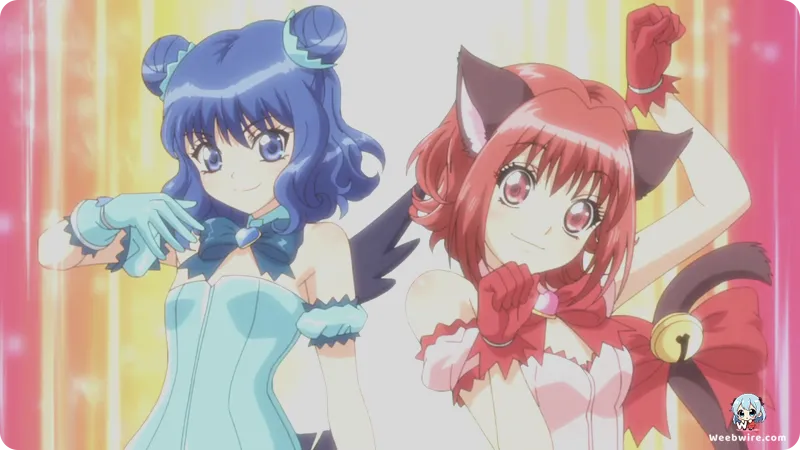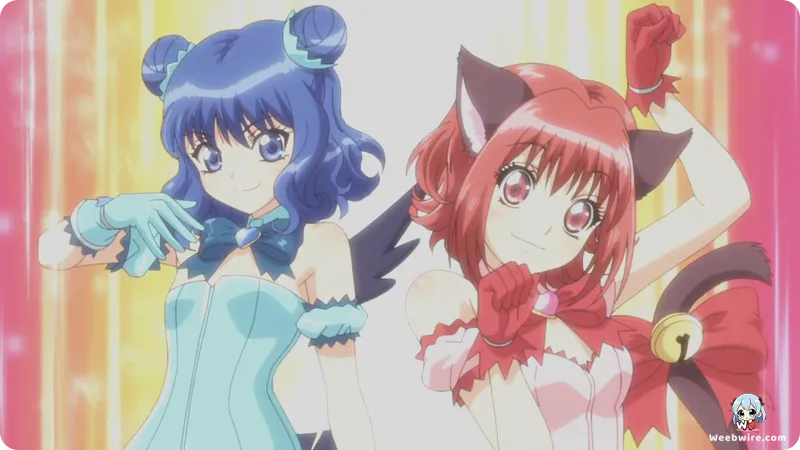Unveiling the Hidden Depths: Tokyo Mew Mew's Enduring Lore and Production Secrets Revealed

Long before its recent resurgence captivated a new generation, the original 2002 anime series, Tokyo Mew Mew, stood as a beacon of magical girl storytelling, enchanting audiences globally with its vibrant characters, compelling narrative, and a distinctive fusion of fantasy and environmental advocacy. While countless fans are intimately familiar with the heroic escapades of Ichigo Momomiya and her fellow Mew Mews, a treasure trove of lesser-known facts and fascinating production insights awaits discovery, promising to enrich any fan's appreciation for this enduring classic. Delving into the foundational elements and subtle intricacies of Tokyo Mew Mew illuminates a creative journey marked by astute decisions and surprising wellsprings of inspiration.
The Genesis of Tokyo Mew Mew: From 'Black Cat Girl' to a Quintet
A cornerstone of Tokyo Mew Mew's compelling origin story lies in the profound influence of co-creator Mia Ikumi’s preliminary concepts. Prior to the formation of the iconic five-girl team, Ikumi had conceived a prototype titled 'Tokyo Black Cat Girl.' This nascent work featured a singular magical heroine endowed with feline abilities, effectively laying the groundwork for Ichigo's character and the overarching thematic thread of animal transformation. The ingenious evolution from a solo protagonist to a formidable quintet, each embodying a distinct endangered species, exemplifies a brilliant expansion of the initial premise. This strategic shift not only allowed for a broader spectrum of personalities but also facilitated a richer narrative tapestry, firmly establishing Tokyo Mew Mew's unique identity within the often-crowded magical girl genre.
An Unwavering Environmental Message
The series is justly celebrated for its overt and deeply felt environmental message, a theme often subtly interwoven into children's programming but brought to the forefront with remarkable clarity in Tokyo Mew Mew. Each Mew Mew is biologically linked to an an endangered animal. Ichigo is connected to the Iriomote wildcat, Mint Aizawa to the blue lorikeet, Lettuce Midorikawa to the finless porpoise, Pudding Fong to the golden lion tamarin, and Zakuro Fujiwara to the grey wolf. This ingenious narrative device not only grants them their extraordinary powers but also serves as a poignant, constant reminder of the planet's ecological fragility and the critical imperative of conservation. The alien antagonists, known as the Cyniclons, are portrayed not merely as a threat to humanity but as destroyers of Earth's delicate ecosystems, further underscoring the series' profound ecological consciousness. This unwavering commitment to its environmental core resonated powerfully with viewers, infusing the lighthearted magical girl action with significant, thought-provoking depth.
Playful Naming Conventions
Adding a delightful layer of charm, the character naming conventions within Tokyo Mew Mew harbor a whimsical secret. The names of the primary heroines are all cleverly derived from food, specifically desserts or culinary ingredients, lending an endearing and memorable touch. 'Ichigo' translates to 'strawberry,' 'Mint' is a refreshing flavor, 'Lettuce' is a common vegetable, 'Pudding' is a beloved dessert, and 'Zakuro' signifies 'pomegranate.' This playful approach extends even to the alien adversaries, with names like Kisshu, Pie, and Tart. Such meticulous attention to detail contributes immensely to the series' overall appeal, making the characters even more beloved by fans and highlighting the creative team's thoughtful world-building.

Studio Pierrot's Enduring Legacy
Studio Pierrot, the renowned animation powerhouse, lent its extensive expertise to the Tokyo Mew Mew project. While frequently associated with shonen titans such as Naruto and Bleach, Pierrot boasts a rich and storied history within the magical girl genre, having previously brought to life classics like Creamy Mami and Fancy Lala. Their involvement in Tokyo Mew Mew seamlessly continued this esteemed legacy, showcasing their remarkable versatility and proficiency in crafting captivating narratives for diverse demographics. The studio's distinctive animation style played a pivotal role in shaping the anime's vibrant aesthetic, from the breathtakingly dynamic transformation sequences to the expressively designed characters, firmly cementing Tokyo Mew Mew's revered position in the annals of magical girl anime history.
Innovative Transformation Sequences
Notably, the Mew Mews' transformation sequences were remarkably innovative for their era. While the foundational animation remained traditional hand-drawn artistry, specific elements, particularly during the magical metamorphoses, skillfully integrated early forms of computer-generated imagery (CGI). This pioneering blend allowed for unprecedented fluidity and intricate movements, rendering the transformations visually spectacular and an indelible highlight of every episode. Ichigo's iconic 'Mew Bell' weapon, with its charming cat-inspired design, further solidified the series' distinctive visual identity.
Anime Adaptation and Manga Divergences
While the anime largely remained faithful to its manga source material, it also introduced subtle divergences and thoughtful expansions. The animated adaptation frequently delved deeper into specific character backstories and relationships, allocating more screen time for nuanced character development and exploring subplots that might have been less prominent in the original manga. These judicious additions often enriched the overarching narrative, providing viewers with a more comprehensive understanding of the characters' motivations and the emotional stakes involved. Such creative liberties are a common practice in adaptations and, in this particular instance, largely served to enhance the viewing experience for a dedicated fanbase.
International Acclaim and Cultural Impact
Tokyo Mew Mew garnered substantial popularity not only within Japan but also achieved considerable international acclaim. For a multitude of Western fans, it served as a pivotal gateway into the magical girl genre, often alongside or following the monumental success of Sailor Moon. Its universally accessible themes, relatable characters, and exhilarating action sequences cemented its status as a cherished classic that effortlessly transcended cultural boundaries. The series' widespread success naturally led to an extensive range of merchandise, encompassing toys, video games, and apparel, further solidifying its standing as a cultural phenomenon and demonstrating its broad appeal across a wide array of demographics.
Ultimately, Tokyo Mew Mew is far more than just a colorful magical girl anime; it stands as a meticulously crafted narrative imbued with a profound message, built upon a foundation of ingenious creative choices and brought to vibrant life by an exceptionally talented production team. These captivating behind-the-scenes insights and engaging fun facts only serve to deepen one's appreciation for this enduring classic, unequivocally proving that even after two decades, the inherent charm and creative ingenuity of the original Tokyo Mew Mew continue to resonate powerfully with fans, both long-standing and newly initiated.
Credits
Tokyo Mew Mew
Author
Mia Ikumi (original artist), Reiko Yoshida (original writer)
Cover Art
Mia Ikumi
Studio
Studio Pierrot
Publisher
Kodansha
Producers





